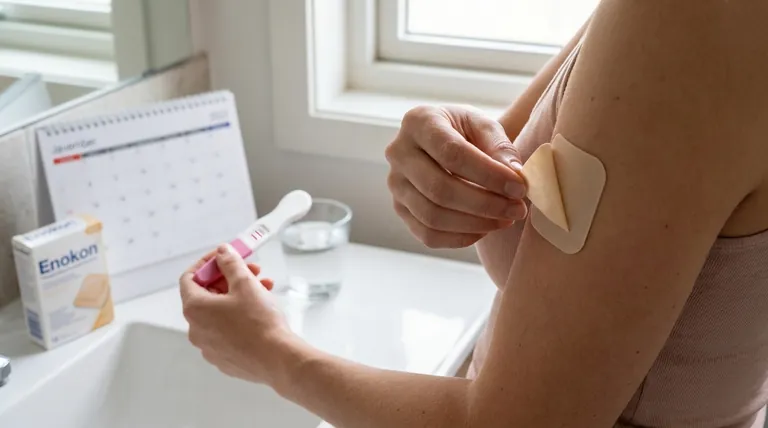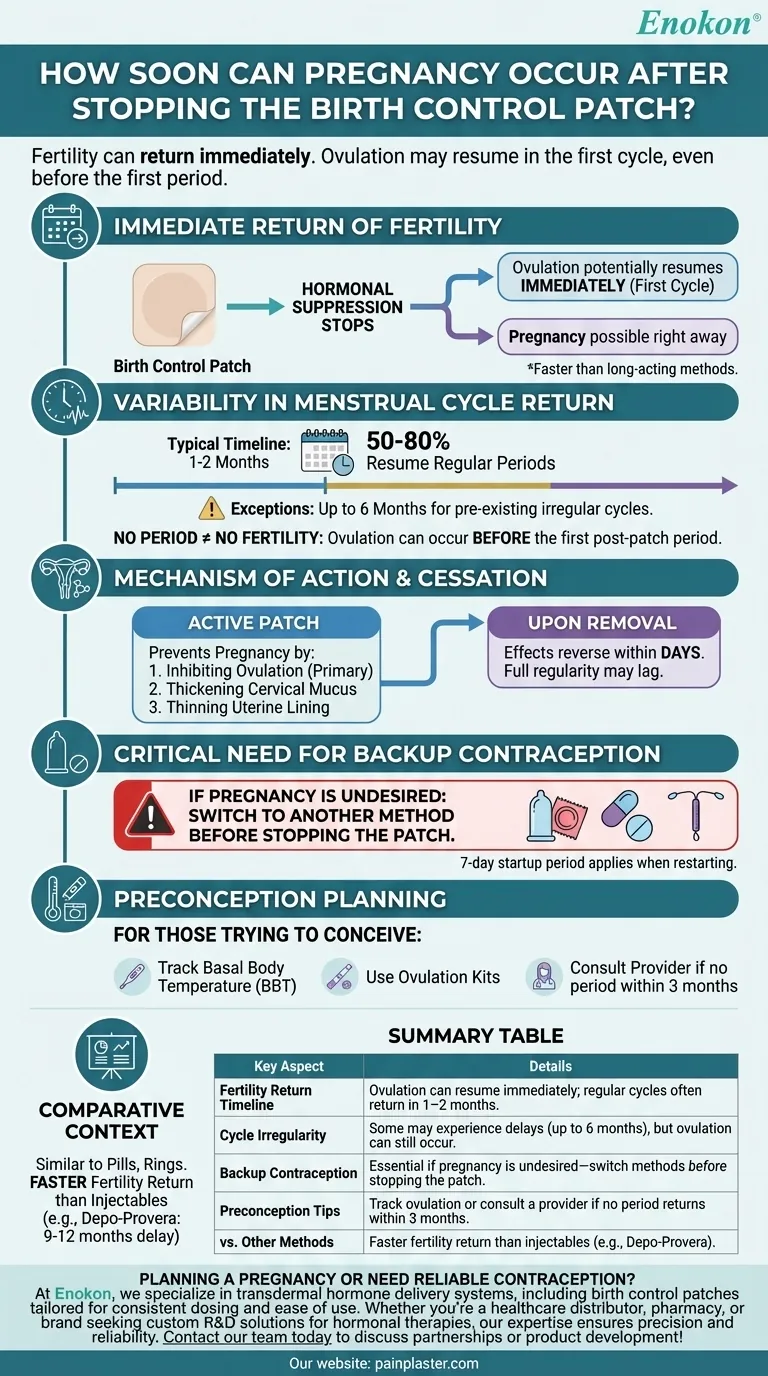Pregnancy can occur very soon after stopping the birth control patch, sometimes immediately, as fertility typically returns quickly once hormonal contraception is discontinued. While most individuals regain regular menstrual cycles within 1-2 months, some may experience temporary irregularity. Since ovulation can resume right away, alternative contraception should be used immediately if pregnancy is not desired.

Key Points Explained:
-
Immediate Return of Fertility
- The estradiol td patch works by suppressing ovulation through synthetic hormones (estrogen + progestin). When discontinued, this suppression stops, allowing ovulation to potentially resume in the first cycle.
- Unlike long-acting methods (e.g., IUDs or implants), the patch’s effects are short-term, so hormonal clearance from the body is faster.
-
Variability in Menstrual Cycle Return
- Typical timeline: 50–80% of users resume regular periods within 1–2 cycles.
- Exceptions: Those with pre-existing irregular cycles may take longer (up to 6 months) for regularity.
- No period ≠ No fertility: Ovulation can occur before the first post-patch menstruation, making pregnancy possible even without a "normal" cycle.
-
Mechanism of Action & Cessation
- The patch prevents pregnancy by:
- Inhibiting ovulation (primary mechanism).
- Thickening cervical mucus (blocks sperm).
- Thinning the uterine lining (reduces implantation likelihood).
- Upon removal, these effects reverse within days, though full cycle regularity may lag.
- The patch prevents pregnancy by:
-
Critical Need for Backup Contraception
- If pregnancy is undesired, switch to another method (e.g., condoms, pills) before stopping the patch.
- The patch’s 7-day startup period applies when restarting it too—immediate protection isn’t guaranteed.
-
Preconception Planning
- For those trying to conceive:
- Track basal body temperature or use ovulation kits to detect returning fertility.
- Consult a healthcare provider if no period occurs within 3 months post-patch.
- For those trying to conceive:
-
Comparative Context
- Similar to other combined hormonal methods (e.g., pills, rings), the patch’s fertility return is faster than injectables (e.g., Depo-Provera, which can delay fertility for 9–12 months).
Practical Takeaway: The body’s response is individual, but biologically, conception is possible the moment ovulation resumes—whether that’s days or weeks after patch discontinuation. Always align cessation with your reproductive goals.
Summary Table:
| Key Aspect | Details |
|---|---|
| Fertility Return Timeline | Ovulation can resume immediately; regular cycles often return in 1–2 months. |
| Cycle Irregularity | Some may experience delays (up to 6 months), but ovulation can still occur. |
| Backup Contraception | Essential if pregnancy is undesired—switch methods before stopping the patch. |
| Preconception Tips | Track ovulation or consult a provider if no period returns within 3 months. |
| vs. Other Methods | Faster fertility return than injectables (e.g., Depo-Provera). |
Planning a pregnancy or need reliable contraception?
At Enokon, we specialize in transdermal hormone delivery systems, including birth control patches tailored for consistent dosing and ease of use. Whether you’re a healthcare distributor, pharmacy, or brand seeking custom R&D solutions for hormonal therapies, our expertise ensures precision and reliability.
Contact our team today to discuss partnerships or product development!
Visual Guide

Related Products
- Menthol Gel Pain Relief Patch
- Lidocaine Hydrogel Pain Relief Patch for Pain Relief
- Far Infrared Deep Heat Relief Patches Medicated Pain Relief Patches
- Prostate Pain Kidney Health Care Patch for Men
- Heat Relief Capsicum Patch for Lower Back Pain Relief
People Also Ask
- How does menthol in the patch work to relieve pain? Discover the Science Behind Fast-Acting Relief
- How should a menthol patch be applied? Follow These Steps for Safe & Effective Pain Relief
- What are common side effects of menthol patch? Key Risks & Safety Tips
- How does menthol work in the Reliever Patch? Dual-Action Pain Relief Explained
- What are the serious side effects of menthol patch that require immediate medical attention?
















